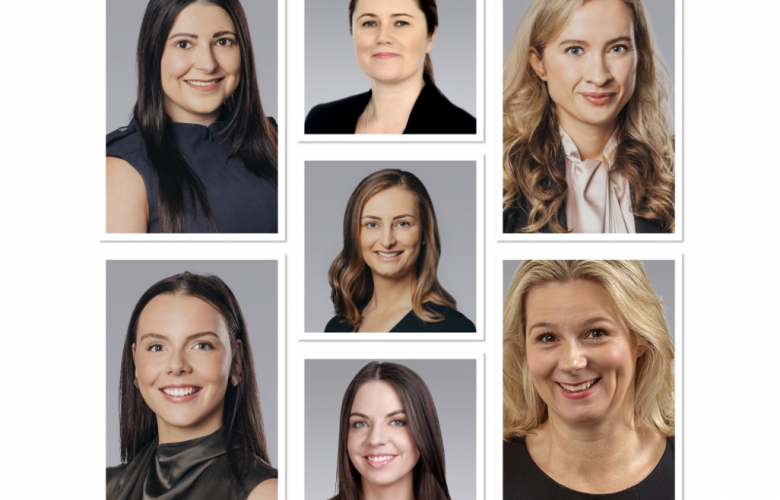Colliers shares insights on the state of the market
Contact
Colliers shares insights on the state of the market
Female experts from Colliers weigh in on the current property market and what to expect within various asset classes.
The year to make strategic decisions
Collier’s Head of Hotels, Australia, Karen Wales, has experienced several property cycles during her 25 years in the tourism industry, with 20 being spent in hotel property. She said a significant event that shakes the business landscape typically occurs every decade.
“The global hotel and tourism industry was one of the hardest hit sectors of the pandemic and is now emerging from the great reset, and the outlook for the visitor economy is looking brighter than at any time over the past three years with 2023 emerging as the year to make strategic decisions and set up growth for the next decade.”
“Australia remains relatively stable in a more uncertain world with a large domestic tourism base and aspirational international appeal. It will ensure that the country’s hotel market stays high on the radar for international investors, particularly while the Australian Dollar remains low and amidst a global rebalancing of portfolios to take advantage of opportunities arising over the coming years,” said Ms Wales.
A repricing of property assets
With over ten years of real estate experience, having started as a property valuer, Colliers’ Director of Capital Markets, Anna Cavar, said the market is currently experiencing a repricing of assets.
“After a couple of years of significant events impacting the industry, the property market is in a reset period. Groups are seeking certainty on debt pricing, asset pricing and some even waiting for repricing of rents for new developments before making their next property decision.”
“I’m expecting an increased number of assets to trade on-market this year, building on the momentum we have started to see in Sydney and is set to follow in Melbourne shortly,” added Ms Cavar.
Push for flight to quality and fitted office space
Alissa Woods, Manager of Office Leasing, Melbourne CBD, has worked in real estate for a decade, having spent the past five years as an office leasing agent. “It is an exciting part of the property field to be in, especially now after the pandemic, as the value of office space has evolved to focus more on employee experience rather than headcount to space ratios.”
“There has been a strong push for flight to quality and fitted space throughout the office sector, and we are also starting to see larger companies come to the market, enquiring about larger spaces. With the pedestrian foot traffic increasing significantly in Melbourne’s CBD, and some days even experiencing higher levels than pre-covid, the outlook for 2023 remains positive with high levels of enquiry and activity,” said Ms Woods.
Momentum has picked up more than expected
The beginning of this year is starkly different to last, said Jodi Birch, Colliers’ Associate Director of Research, who sits on over 25 years of property expertise. “Enquiry at the end of last year pointed to a strong year ahead, but momentum has picked up even more than expected, and we’re seeing so much more interest and activity now.”
“Many businesses spent last year investigating how their employees and industry responded to covid and their preferences for flexible work. They’re now much more certain of the size, quality and location of the space they want to commit to. With some sublease space and backfill vacancy in the Melbourne market, 2023 will be a year of matching these needs with existing stock, as we’re only expecting one to two new completions to be delivered in the coming couple of years,” said Ms Birch.
Top-end stock to continue on a competitive trajectory
Like her colleagues, Mikayla Toy, Associate Director of Tenant Advisory Occupier Services, notes that the office market is back in swing after a few challenging years. “Occupiers are now right-sizing, investing in the ‘workplace experience’ and reimagining how we utilise the office environment. The strong pull in flight to quality has left a notable gap in the market as lower B grade stock has become more challenging to lease while the A grade market is performing strongly.”
“As the year continues, I expect the top end of the market to continue to tighten. Businesses will start to consider alternative options whereby proactive landlords, who took the opportunity to upgrade their buildings and invest CAPEX into their assets during the pandemic years, will benefit,” Ms Toy added.
Luxury leading retail recovery
Stacey Gaff, Colliers' Senior Executive of Retail Leasing, said retail activity had bounced back in Melbourne's CBD with an increase in enquiry from premium and fine dining operators seeking larger tenancies above 1,500 sqm.
"People's retail patterns changed during the pandemic with lockdowns pushing people to online shopping, but since the lockdowns lifted, we have seen an increased desire for people to return to physical stores, with the retail sector performing strongly during 2022. Luxury brands have been leading the way for retail recovery, as an increasing number of international and new-to-market brands are seeking flagship stores in prime Melbourne CBD locations," Ms Gaff said.
The drivers behind healthcare
The healthcare sector is a broad industry that Lynn Johnsen has been involved in for 10 years. As Colliers’ Head of Data Strategy & Solutions for Valuation & Advisory Services, she notes that interest rate hikes, funding pressures and access to workforce dominate current healthcare operating conditions.
“Activity continues to be underpinned by an ageing demographic and associated medical complexities, coupled with the means to pay for services above that of public health offerings. People want to live longer and live better, driving demand for not only acute medical infrastructure but also wellness offerings that enable people to help themselves.”
“In 2023, we expect hospital and life sciences expenditure activity to accompany major public hospital construction in suburban corridors, assuring long-term positioning through patient flows and access to medical practitioners,” Ms Johnsen concluded.














